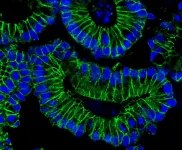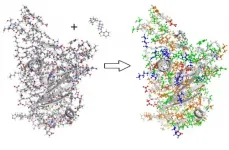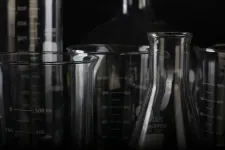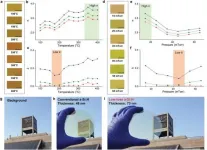(Press-News.org) Launched in 1988, the Global Polio Eradication Initiative (GPEI) stands out as one of the largest, internationally coordinated global public health major projects conducted to date, with cumulative spending of over $16.5 billion for 1988-2018, according to the World Health Organization (WHO). More than 30 years later, stubborn outbreaks of wild poliovirus still occur in Afghanistan and Pakistan, where cases have been increasing since 2018. The global eradication of polio continues to be an elusive goal.
A special issue of the journal Risk Analysis, titled "Global Poliovirus Risk Management and Modeling," looks at the current status of polio eradication efforts and evaluates the GPEI strategies from its 2019-2023 strategic plan. The February 2021 issue includes 13 research papers published within the last year in Risk Analysis along with an introductory Perspective written by Dr. Kimberly Thompson, an expert on modeling polio and founder of Kid Risk, Inc., a non-profit organization focused on pediatric risk analysis. This is the third special issue on poliovirus published by Risk Analysis, with prior issues in 2006 and 2013.
"With each special issue, we have expected a successful polio endgame within a few years of publication," says Dr. Thompson, who led several of the studies. "But challenges remain." The first paper in the special issue offers a reflection on prior modeling that delves into the differences between model projections for 2013-2020 and what actually occurred. Dr. Thompson highlights that "in contrast to prior modeling that focused on identifying the best strategies, the modeling in the current special issue focuses on actual practice and GPEI plans, and it assumes realistic, non-optimal GPEI and country performance based on recent experience." The second paper in the special issue shows the estimated cases for 2019-2023 with these assumptions and demonstrates the GPEI was off track even before the COVID-19 pandemic disrupted polio immunization activities.
There has been some positive news in the last few years. The GPEI certified the global eradication of type 2 wild poliovirus (WPV2) in 2015 and type 3 (WPV3) in 2019. In August 2020, the World Health Organization's (WHO's) African Region certified the regional elimination of all wild polioviruses in Africa. But type 1 (WPV1), the most transmissible and virulent type of poliovirus, continues to transmit in parts of Pakistan and Afghanistan.
With respect to the situation for vaccine-derived poliovirus cases of type 2, the special issue includes papers that show the increasing risks of globally needing to restart the use of OPV in preventive immunization and the potential impacts of using new OPV strains for type 2 outbreak response. In addition, the last paper of the special issue provides an updated health and economic analysis of the GPEI, which shows that it still promises substantial incremental net benefits compared to the counterfactual of no GPEI. However, delays in achieving polio eradication and the adoption of expensive immunization strategies have taken a toll. In contrast to a 2011 analysis that suggested incremental net benefits on the order of $40-50 billion in 2008 US dollars, which would be equivalent to $48-59 billion in 2019 US dollars, the updated economic analysis suggests incremental net benefits of the GPEI of around $28 billion 2019 US dollars if the GPEI partners can finish the job.
The COVID-19 pandemic has further complicated projections as population mixing changed and polio vaccinations were delayed. "Future analyses will need to explore the implications of the COVID-19 pandemic on polio eradication and other disease control and elimination efforts," adds Dr. Thompson. For those who may recall the media blitz last summer related to a suggestion to use OPV to respond to COVID-19 while waiting for COVID-19 specific vaccines, the special issue includes a study that characterizes the substantial risks and costs of reintroducing OPV in the US.
In alignment with the GPEI's strategic plan for 2019-2023, the studies included in the Risk Analysis issue focus on the status of polio eradication efforts at the beginning of this plan and the expected trajectory of the disease prior to the onset of the COVID-19 pandemic. "Future analyses will need to explore the implications of the COVID-19 pandemic on polio eradication and other disease control and elimination efforts," adds Dr. Thompson.
Research topics in the special issue include:
Updated modeling of the polio endgame
A health economic analysis for oral poliovirus vaccine to prevent COVID-19 in the United States
An updated characterization of the risk of type 2 outbreaks four years after cessation of OPV type 2 use
An updated characterization of outbreak response strategies using novel OPV type 2 strains for 2019-2023
Potential future use, costs, and value of poliovirus vaccines
Health and economic outcomes associated with polio vaccine policy options for 2019-2023
An updated economic analysis of the GPEI
Strategies for supplemental immunization campaigns in Pakistan and Afghanistan to stop WPV1 transmission
Modeling wild poliovirus transmission in northeast Nigeria, the last known reservoir country in Africa, and confidence about its disappearance given available surveillance data
Expected implications of the global cessation of type 3 oral vaccine before type 1. (Globally coordinated cessation of all three serotypes of OPV represent a critical part of the GPEI strategy for the polio endgame.)
Integrated risk, economic, and dynamic transmission modeling offers a tool to support national and global health leaders as they evaluate the increasingly complicated choices in the polio endgame. "While we optimistically believe that polio eradication remains possible and that it should be done, we also believe that the GPEI is not on track to achieve it," says Dr. Thompson. "Modeling can identify strategies that could still be implemented to finish the job more cost-effectively."
INFORMATION:
About SRA
The Society for Risk Analysis is a multidisciplinary, interdisciplinary, scholarly, international society that provides an open forum for all those interested in risk analysis. SRA was established in 1980 and has published Risk Analysis: An International Journal, the leading scholarly journal in the field, continuously since 1981. For more information, visit http://www.sra.org.
Earth is home to millions of known species of plants and animals, but by no means are they distributed evenly. For instance, rainforests cover less than 2 percent of Earth's total surface, yet they are home to 50 percent of Earth's species. Oceans account for 71 percent of Earth's total surface but contain only 15 percent of Earth's species. What drives this uneven distribution of species on Earth is a major question for scientists.
In a paper published February 16 in the Journal of Biogeography an international team of researchers led by Jacob S. Suissa, Ph.D. Candidate in the Department of Organismic and Evolutionary Biology, ...
Memorial Sloan Kettering Cancer Center (MSK) physicians and scientists presented new research at the 2021 American Society of Clinical Oncology Genitourinary Cancers Symposium held virtually February 11-13. Notably, MSK medical oncologist Robert Motzer, MD, presented encouraging data from a phase III randomized study that assessed two new treatment combinations as first-line treatments that may prolong survival in people with advanced kidney cancer. Dr. Motzer's findings were also published on February 13 in the New England Journal of Medicine.
In this large, international trial involving 200 sites across 20 countries, Dr. Motzer and a team of investigators ...
Using advanced RNA sequencing, scientists have identified two unique subtypes of a prominent mutation present in many patients with Acute Myeloid Leukemia (AML) - called NPM1 - that could help predict survival and improve treatment response for patients whose leukemic cells bear the mutation.
In research published Feb. 16, in Nature Communications, a team led by Princess Margaret Cancer Centre Senior Scientists, Drs. Benjamin Haibe-Kains, Aaron Schimmer and Mark Minden, have discovered that within the NPM1 mutation of AML there exists two unique subtypes, one of which can be effectively treated with drugs already in use.
It is the first study to classify within the common NPM1 mutant form of AML two subtypes, one being "primitive" and the other ...
Most people infected with SARS-CoV-2 are able to recover from the disease at home - even if they might experience very stressful disease progressions. Some have no symptoms at all. But about ten percent of those affected become so severely ill that they have to be treated in a hospital. The assumption that a weak immune system is behind a severe progression is short-sighted. Especially with critical progressions, the immune system works under intense pressure, but does not manage to control the virus.
A Berlin research group has now observed how SARS-CoV-2 uses an immune system defense mechanism to increasingly hijack ...
Computing - Modeling COVID dynamics
To better understand the spread of SARS-CoV-2, the virus that causes COVID-19, Oak Ridge National Laboratory researchers have harnessed the power of supercomputers to accurately model the spike protein that binds the novel coronavirus to a human cell receptor.
These simulations also shed light on the ligand molecules that can inhibit such binding, pointing the way to potential drug therapies.
An ultrafast quantum chemical modeling method provides information about the critical electronic interactions between protein and ligand chemicals, going beyond the classical interaction models that are normally employed in computational drug discovery.
The findings will enable accurate predictions of the performance of currently available inhibitors ...
The University of Kent has led a study highlighting the urgent need for the UK's Government and renewable energy industries to give vital attention to decommissioning offshore wind turbines approaching their end of live expectancy by 2025. The research reveals that the UK must decommission approximately 300 and 1600 early-model offshore wind turbines by 2025 and 2030, respectively.
Urgent focus is needed now to proactively use the remaining years until turbines installed in the 1990s and early 2000s are no longer safely functional in 2025, to prevent safety lapses, potentially huge costs and the irretrievable loss of the skillset required for safe decommission.
The research shows that these original turbines have an approximate lifetime of 20 to 25 years, but this expectation ...
Atropisomers are a class of stereoisomers (chemical compounds that differ in spatial arrangement of atoms) arising from restricted rotation around a single bond and have various applications in chemistry. To date, most research on atropisomers has focused on "biaryl atropisomers" (due to the rotational restriction around a carbon-carbon bond), but it is also possible for atropisomers to arise from rotational restrictions around a nitrogen-carbon (N-C) bond. These N-C axially chiral compounds are found in various natural products and bioactive compounds and thus have promising applications in medicine ...
A POSTECH research team has developed a transparent amorphous silicon that transmits visible light - which permits us to distinguish the colors of objects - enabling the development of paper-thin lenses usable in head-mounted displays (HMD) that show virtual and augmented reality images in real time.
A research team - led by Professor Junsuk Rho of POSTECH's mechanical engineering and chemical engineering departments, and Ph.D. candidate Younghwan Yang and Dr. Gwanho Yoon of the Department of Mechanical Engineering - has developed visibly transparent amorphous silicon by improving the plasma enhanced chemical vapor deposition (PECVD) method, a practice widely used by Korean display manufacturers. ...
Tsukuba, Japan - Sleep is very important for athletes, and sleep loss can affect physical performance and cognitive ability. But now, researchers from the University of Tsukuba have identified the prevalence of sleep disorders in visually impaired athletes, as well as specific risk factors associated with lower sleep quality.
In a study published last November in Sleep Medicine, researchers from the University of Tsukuba conducted a survey of 99 visually impaired athletes in Japan and analyzed data from 81 respondents. They found that approximately one-third of the respondents had sleep disorders. Further, higher levels of stress regarding interpersonal relationships ...
CORVALLIS, Ore. - Statistical modeling developed by Oregon State University researchers has confirmed that changes to melanoma patients' gut microbiome led them to respond to a type of treatment capable of providing long-term benefit.
Findings were published in Science.
The modeling technique invented by Andrey Morgun of the OSU College of Pharmacy and Natalia Shulzenko of Oregon State's Carlson College of Veterinary Medicine is known as transkingdom network analysis.
The human gut microbiome is a community of more than 10 trillion microbial cells from about 1,000 different bacterial species, and transkingdom network analysis integrates ...





